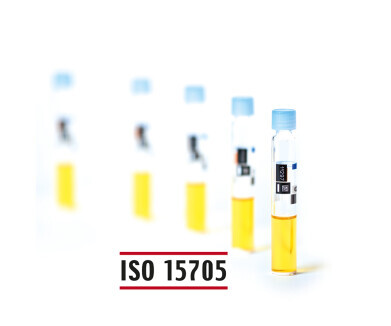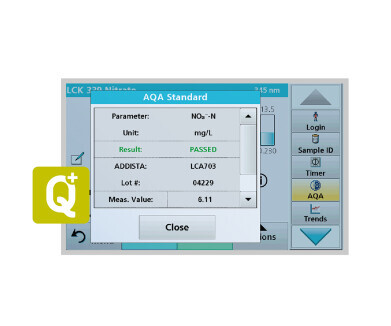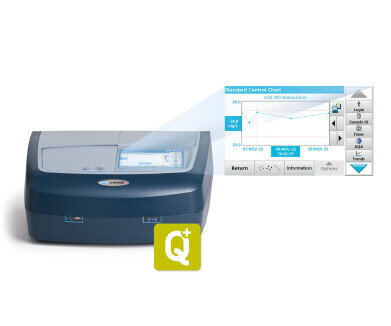Water/wastewater
Laboratory Analytical Quality Assurance (AQA) – how and why?
Jun 12 2024
Laboratory analysis and quality assurance measures are inseparably interlinked. AQA supports the verification of results and documents the correct operation of the measuring system. For the operator, this starts with correct sampling and ends with a documented lab analysis report…
Why implement lab quality control?
It might seem obvious that a laboratory should adhere to high quality standards, but AQA is about more than just using the right procedures, people and equipment. Today, the purchasers and users of goods and services expect high quality standards from suppliers and manufacturers, which is why checking, verification and documentation are so important. The results of analyses can also be considered as goods, and as such they require high levels of quality assurance. Responsibility for analytical data lies with the users themselves or their supervisors. Both are therefore liable for any incorrect interpretations and decisions that are made as a consequence of incorrect analytical results. The integration of appropriate quality control measures at the correct points in the analytical process therefore ensures reliable analysis and minimises the risk of exposure to liability.
How quality assurance is organised in the laboratory
The organisation and implementation of AQA in laboratories involves dealing with a variety of international and local standards. The key issues to be considered are:
- Defining the measures to be implemented based on applicable standards and guidelines
- Internal and external measures
- Analytical equipment (monitoring and maintenance)
- Laboratory staff (skills and training)
- Documentation of implemented measures
The requirements apply across all industrial and municipal sectors.
Internal QA measures are carried out by the users themselves and include multiple determinations of individual samples, measurement of standard solutions, plausibility checks and verification of equipment such as pipettes and photometers. Addista standard solutions are the ideal QA tool for the LCK Cuvette Test System. Download the AQA Guide to learn more about recommended measures and frequencies.
External QA measures include participation in round-robin tests, regular training sessions and parallel measurements against standard methods by accredited laboratories.
All documentation must be accurate and clearly arranged. It must be obvious who produced the analytical data and when, and results of quality assurance measures should be documented correctly.
What do you need to pay attention to?
- All measurement results should be within the confidence interval
- Aim to improve working methods by narrowing the confidence interval
- Identify trends
Empirical values perform an important role in the evaluation of results. Changes in the concentration of substances may depend on a variety of factors, such as total water quantity, the period of time spent in the plant, pH value etc. Analytical values must therefore be corroborated by empirical values.
Utilising technology developments
Many of the latest developments have been designed to simplify operations, improve clarity and remove the potential for human error. For example, AQA measures can now be defined and documented in the latest Hach photometers, without the need for additional software. A configurable reminder function provides support with everyday work, and current batch certificates (for GMP/GLP documentation purposes) can be found on the RFID tag in the cuvette box. This RFID technology means that all batch specific information can be retrieved immediately on the photometer and printed out. Measurement values are saved using the established Addista system, including standard and round-robin solutions, and quality control cards can be created and maintained by the photometer.
Transparent working processes
With the Hach DR photometer, it is possible to access calibration data, batch numbers, measurement processes and raw data at any time. All data can be called up with one key press for veriï¬ÂÂÂcation on a large display. For quality assurance, RFID identiï¬ÂÂÂcation is used to read and transfer batch certiï¬ÂÂÂcates, quality data and target values for standards.
Conclusion
Regular application of AQA ensures that:
- The results of analyses are traceable
- The correct status of the analysis system is documented
- Handling errors can be recognised immediately
- Comparison of measured results is possible
- The quality of analytical data is recognised by all stakeholders
Digital Edition
IET 35.2 March
April 2025
Air Monitoring - Probe Sampling in Hazardous Areas Under Extreme Conditions - New, Game-Changing Sensor for Methane Emissions - Blue Sky Thinking: a 50-year Retrospective on Technological Prog...
View all digital editions
Events
May 06 2025 Nuremberg, Germany
May 10 2025 Karachi, Pakistan
May 11 2025 Vienna, Austria
May 11 2025 Seoul, South Korea
Salon Analyse Industrielle & Instrumentation
May 14 2025 Paris, France







.jpg)



.jpg)


_(4427399123)-(2).jpg)









